Bay Ridge Greek Revival, a Rare Survivor, Could Be Razed for Apartments
While the march of urban development hit Bay Ridge in earnest in the 20th century, nestled amidst the Art Deco apartment buildings and rows of houses there are still some remnants of the 19th century village that once existed.

Photo by Susan De Vries
While the march of urban development hit Bay Ridge in earnest in the 20th century, nestled amidst the Art Deco apartment buildings and rows of houses there are still some remnants of the 19th century village that once existed. On 99th Street, near Fort Hamilton, one small house, likely dating to the mid 1830s or 1840s, is on the market as a development site.
The wood-frame dwelling with some Greek Revival exterior details still intact at 423 99th Street is asking $1.48 million, a price drop from $1.6 million when it was listed back in January.
It sits on a 50-foot-wide lot that includes a garage and sold in 2022 for $990,000 after being in the same family hands since the 1980s. Since the sale, it has been on and off the market several times with different brokers.
Despite being covered with green asphalt shingles, the silhouette of the house gives a hint to its age along with a wooden cornice with slender brackets, a Greek Revival-style door surround, and remnants of the original window surrounds. Those surrounds are more clearly visible in the historic tax photo, which shows the siding was already in place circa 1940.
The current listing doesn’t show any images of the interior, so it is hard to know if any period elements have survived the centuries. (A previous listing suggested it would be “possible to restore and rebuild the fully detached home.”) There is some plywood patching on the roof and some missing shingles, so it’s possible there could be some water damage on the interior. A look at Google Street View shows that patching in place since at least 2022.
In 2014 a survey of historic resources in Bay Ridge prepared for the Historic Districts Council identified the house as potentially one of the few recognizably Greek Revival houses left in the neighborhood. The report, undertaken after the neighborhood had been declared one of the organization’s Six to Celebrate in 2012, estimated a circa 1830 construction date for the 99th street dwelling.
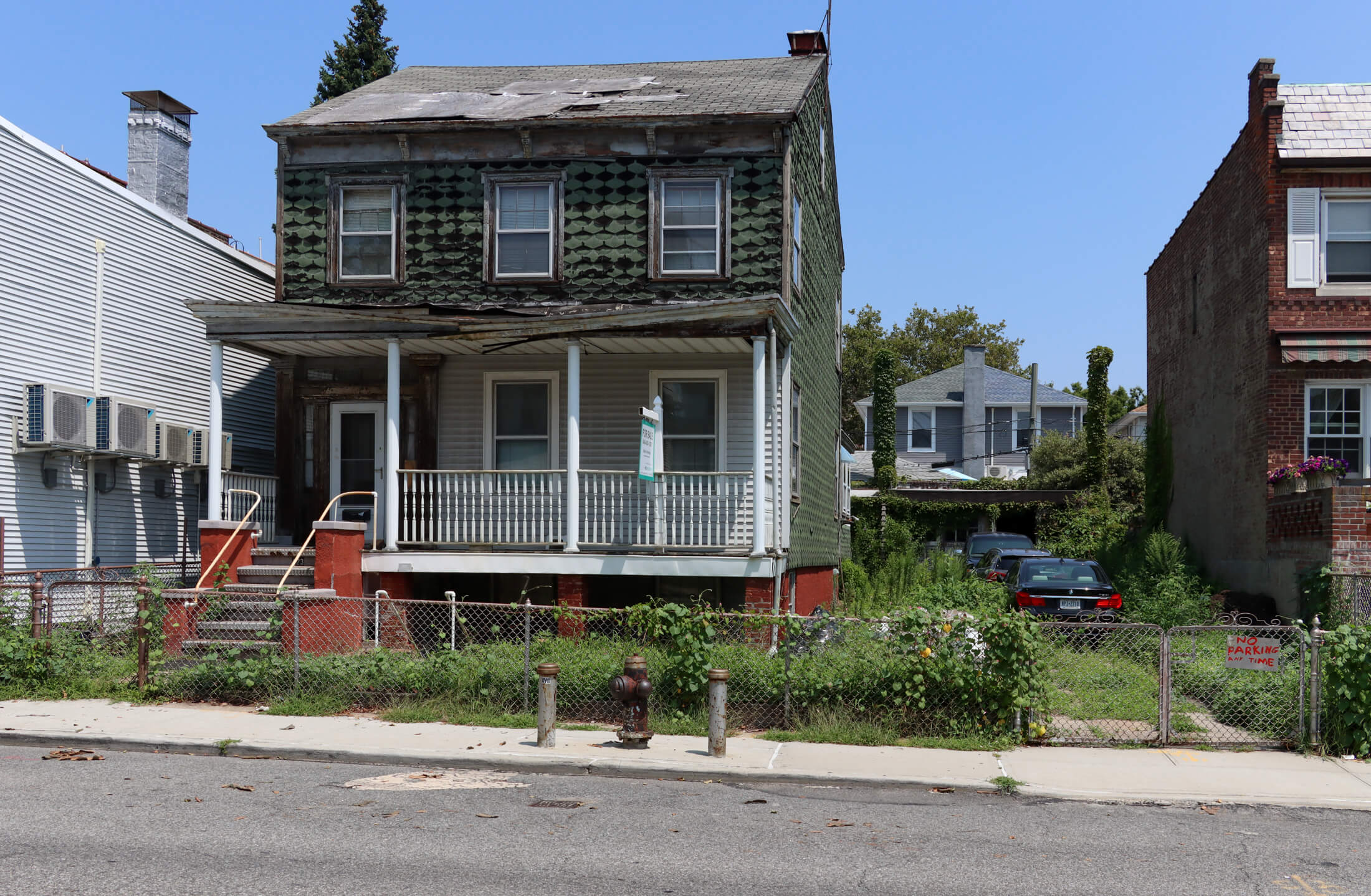
A house surviving from that period wouldn’t be unheard of in Bay Ridge, which was once dotted with country homes, resorts, and villages. A better known Greek Revival dwelling in the area is the individually designated Bennett-Farrell-Feldman house, a much grander home dating to a bit later, circa 1847.
For the 99th Street house and some other surviving wood-frame dwellings nearby, a construction date of later than 1834 would be likely. In August of that year an auction of the property of the late Jane Denyse Smith was held with land offered in lots and parcels. A map of the farm, described as “at Fort Hamilton in the Town of New Utrecht,” shows it abutting the recently completed Fort Hamilton.
A few streets are depicted, including 99th Street, then known as Clarke Street. It is shown as already divided into “village lots” with a corner lot reserved for an Episcopal church. St. John’s Episcopal Church was founded that year. An 1890s worship space built by the congregation still stands on that corner lot and now serves as the home of the Bay Ridge Community Development Center. The organization plans to build a new facility on its site.
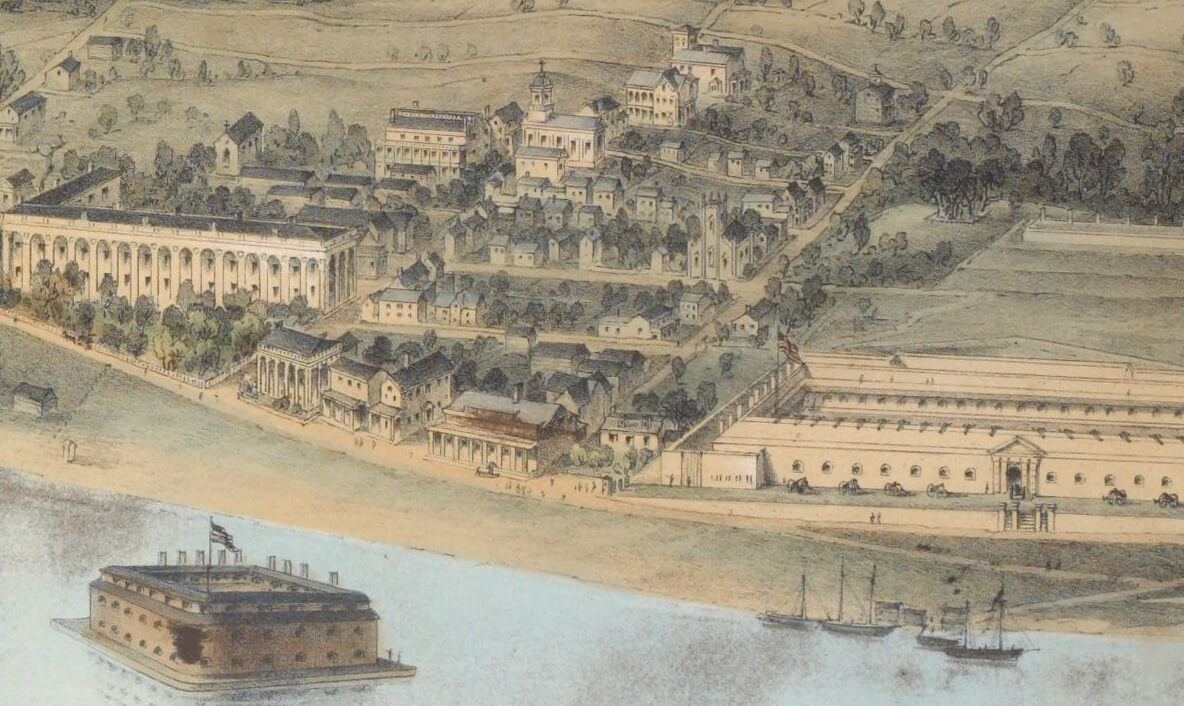
Of those village lots on Clarke Street, No. 65 would later be developed with the house now known as 423 99th Street. A lithograph from 1854 shows the flourishing village of Fort Hamilton with the original St. John’s visible and houses dotting the block. By 1873, a map indicates the house as the property of Mrs. J. H. Hopkins.
A photo from the 1920s shows the street with many of its early wood-frame buildings intact. A glimpse of the columned porch, cornice, and clapboards of No. 423 are just visible peeking out from the adjoining house, in use as a military supply store. That house, 421 99th Street, is extant as a single-family dwelling with its cornice still in place.
Whether this little Greek Revival dwelling survives depends on a buyer with more than a bit of vision and the funds to see it through.
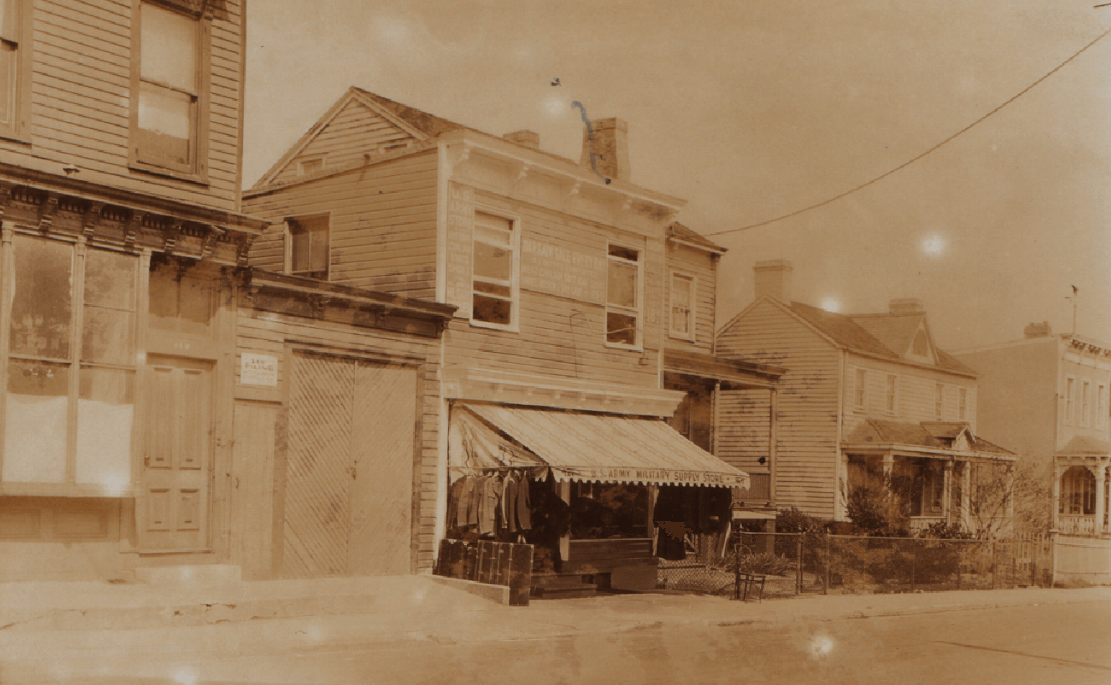
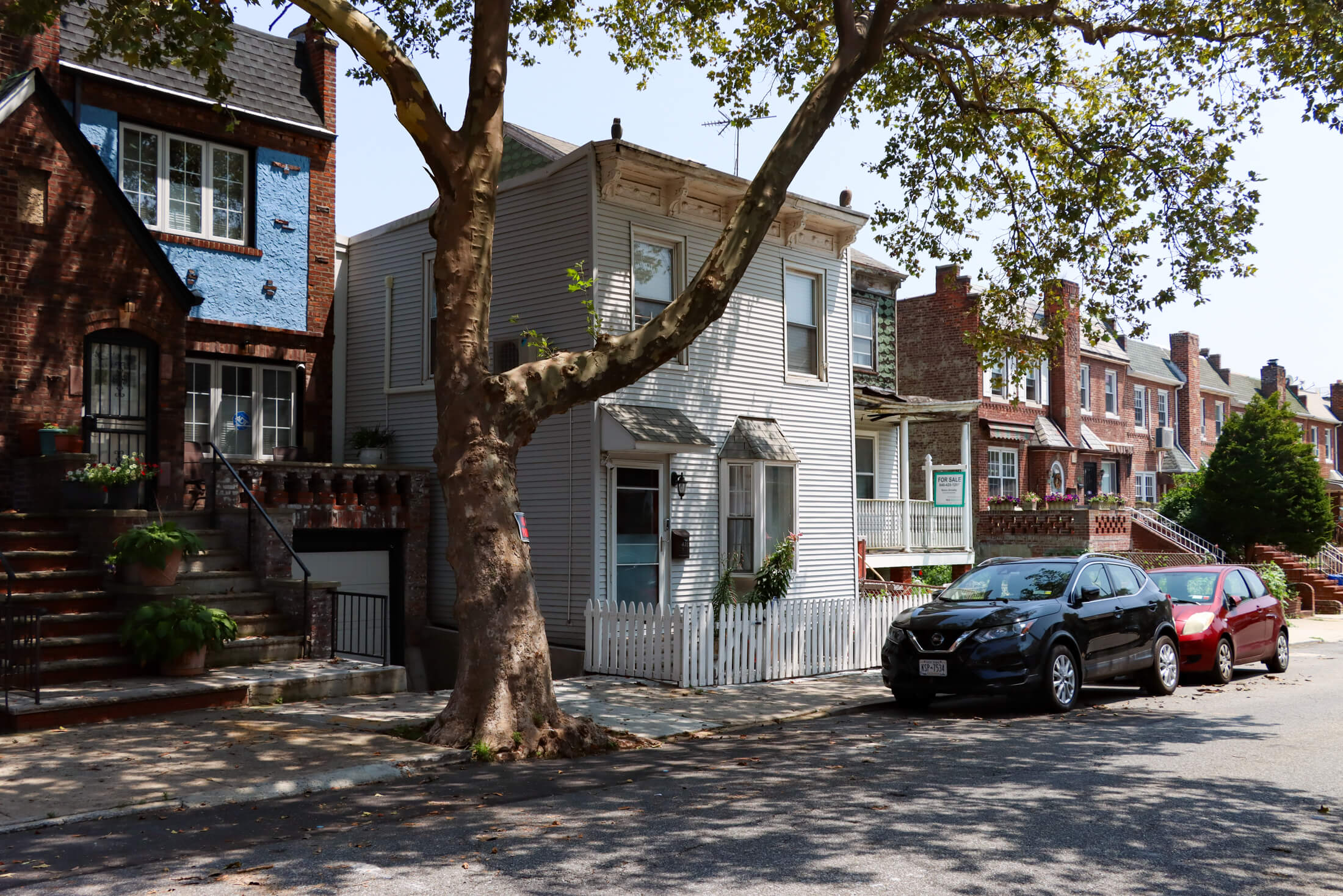
[Photos by Susan De Vries unless noted otherwise]
Related Stories
- A Greek Revival Survivor of the Bucolic Heyday of Shore Road in Bay Ridge
- The Story Behind Bay Ridge’s Famous Gingerbread House and How It Came to Be
- Saving the Tiny Cemetery of Bay Ridge
Email tips@brownstoner.com with further comments, questions or tips. Follow Brownstoner on Twitter and Instagram, and like us on Facebook.

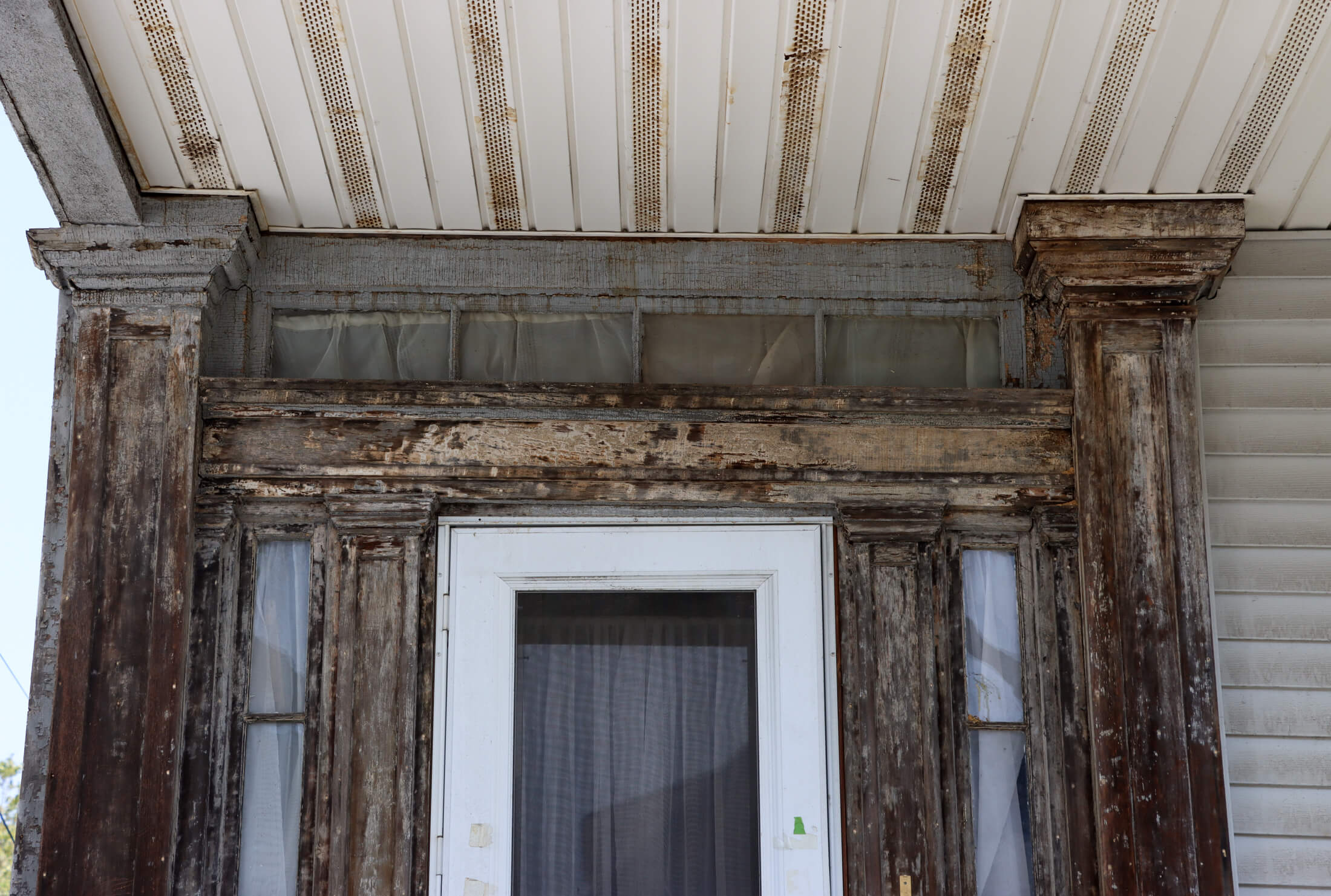
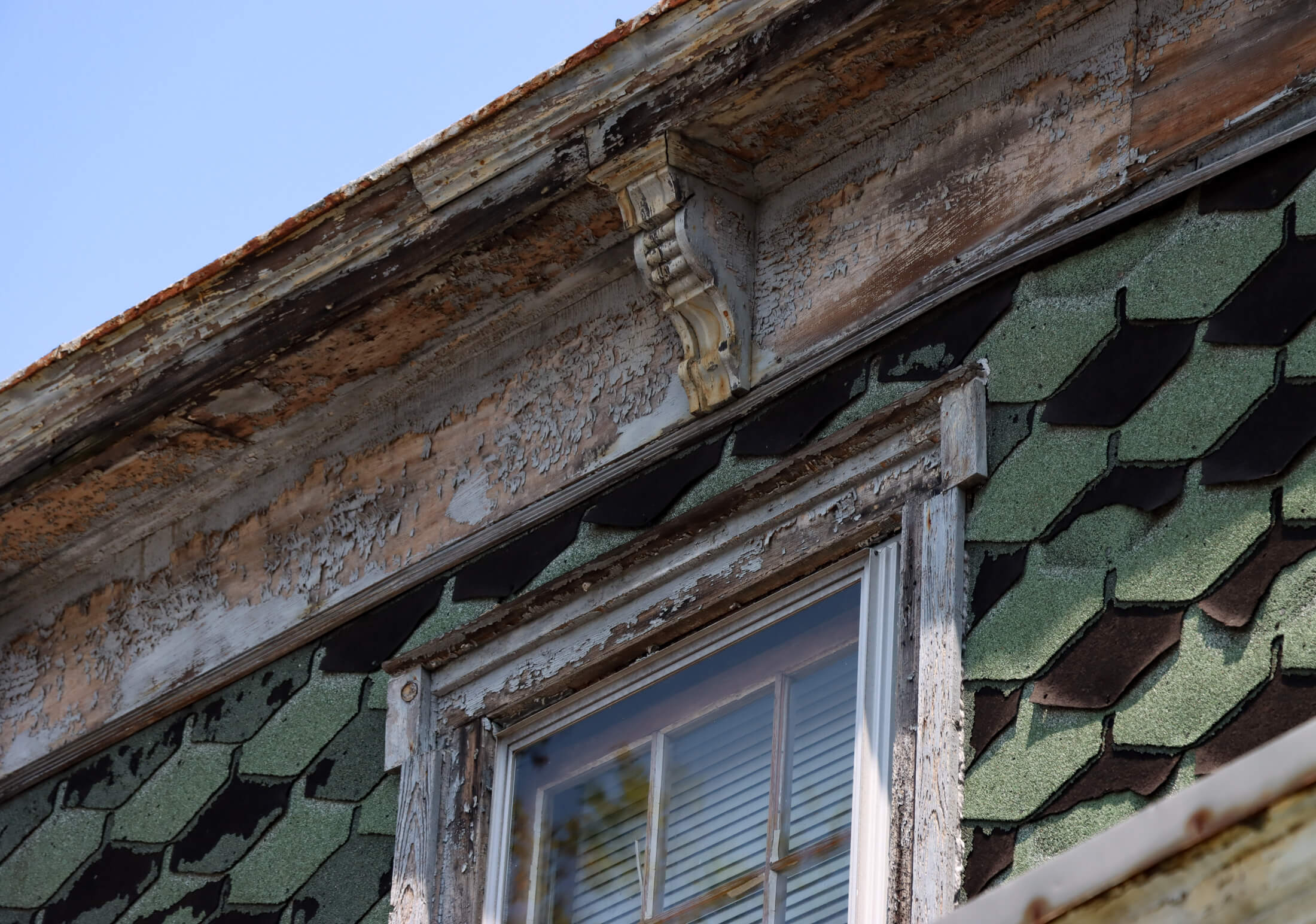
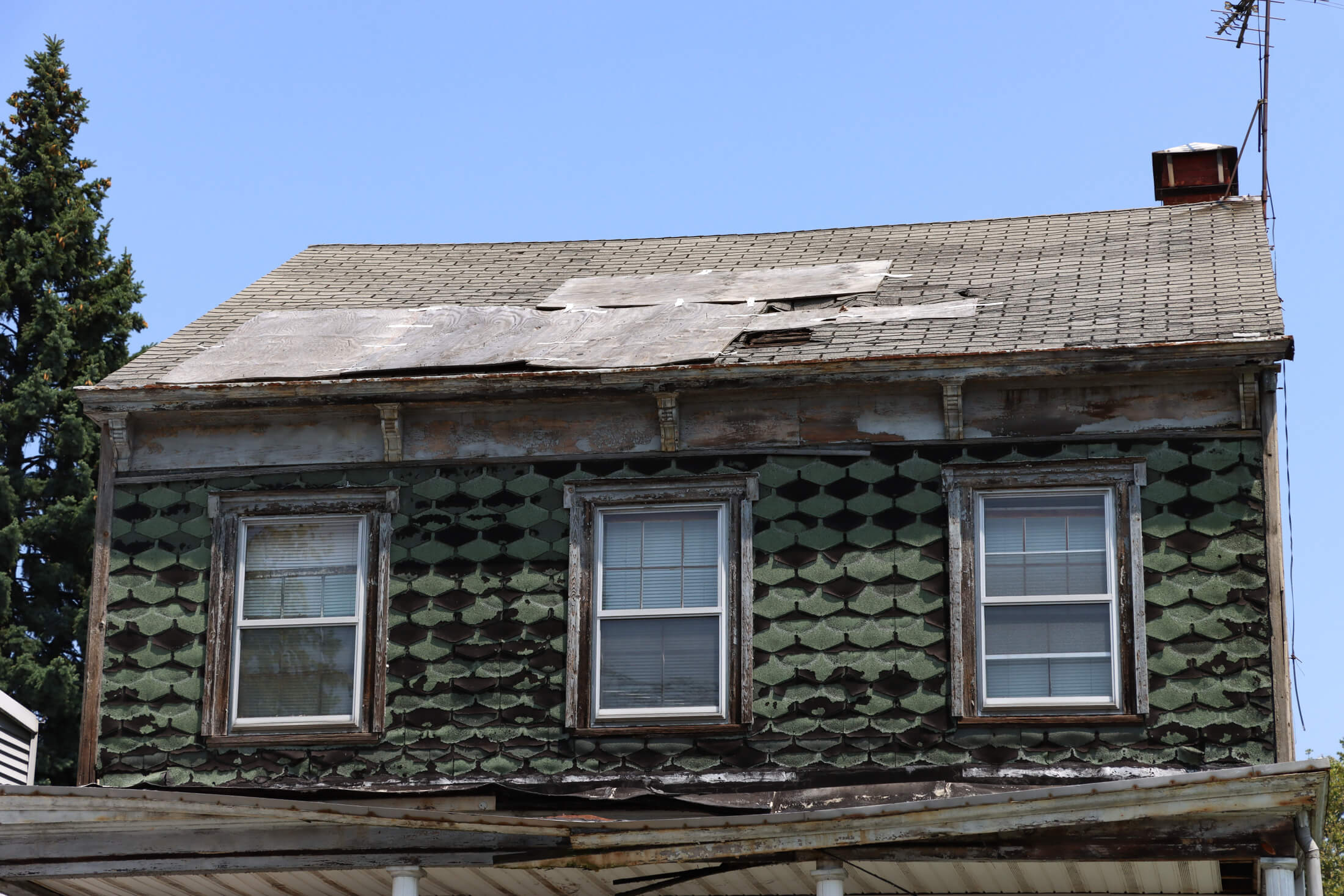
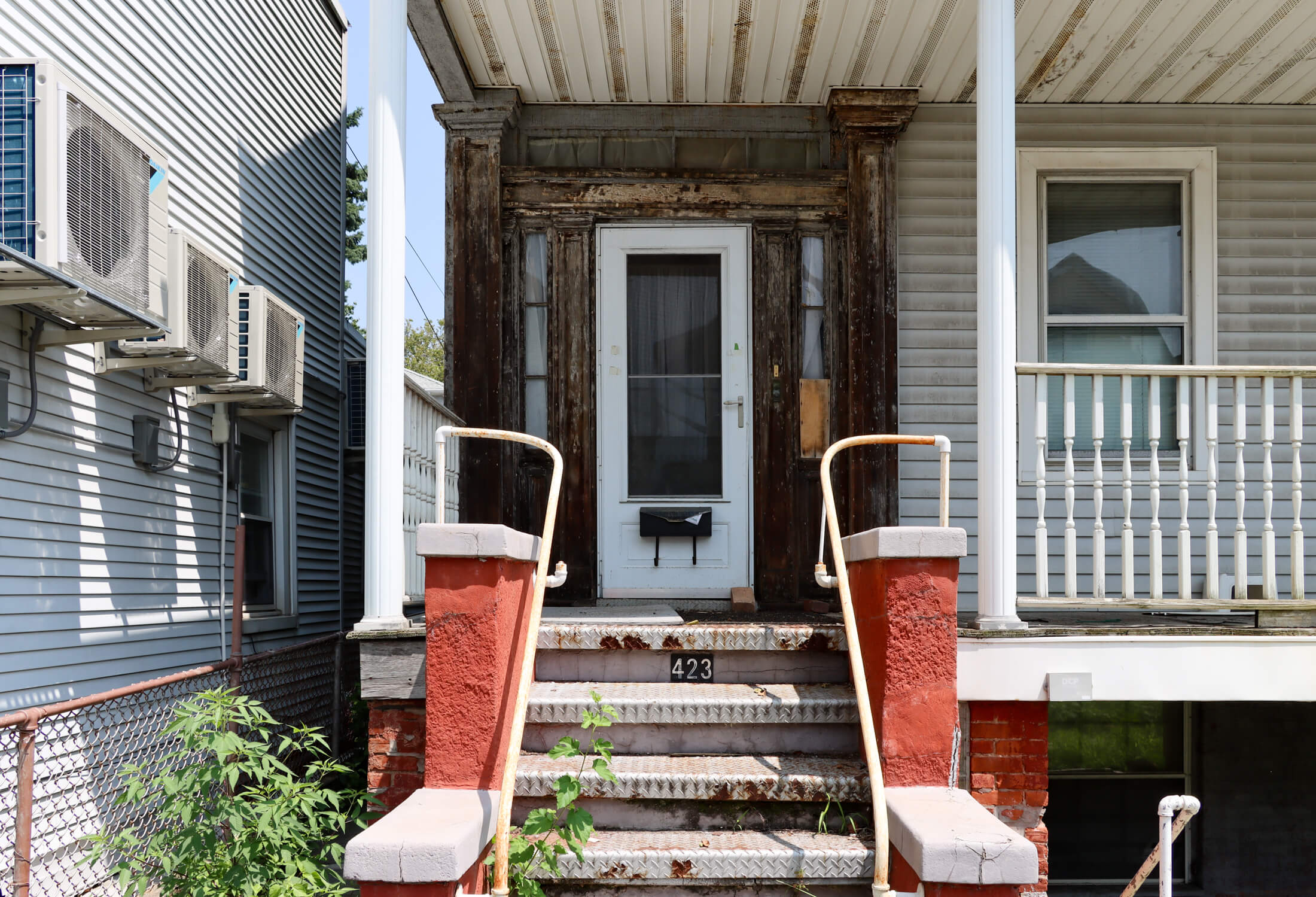
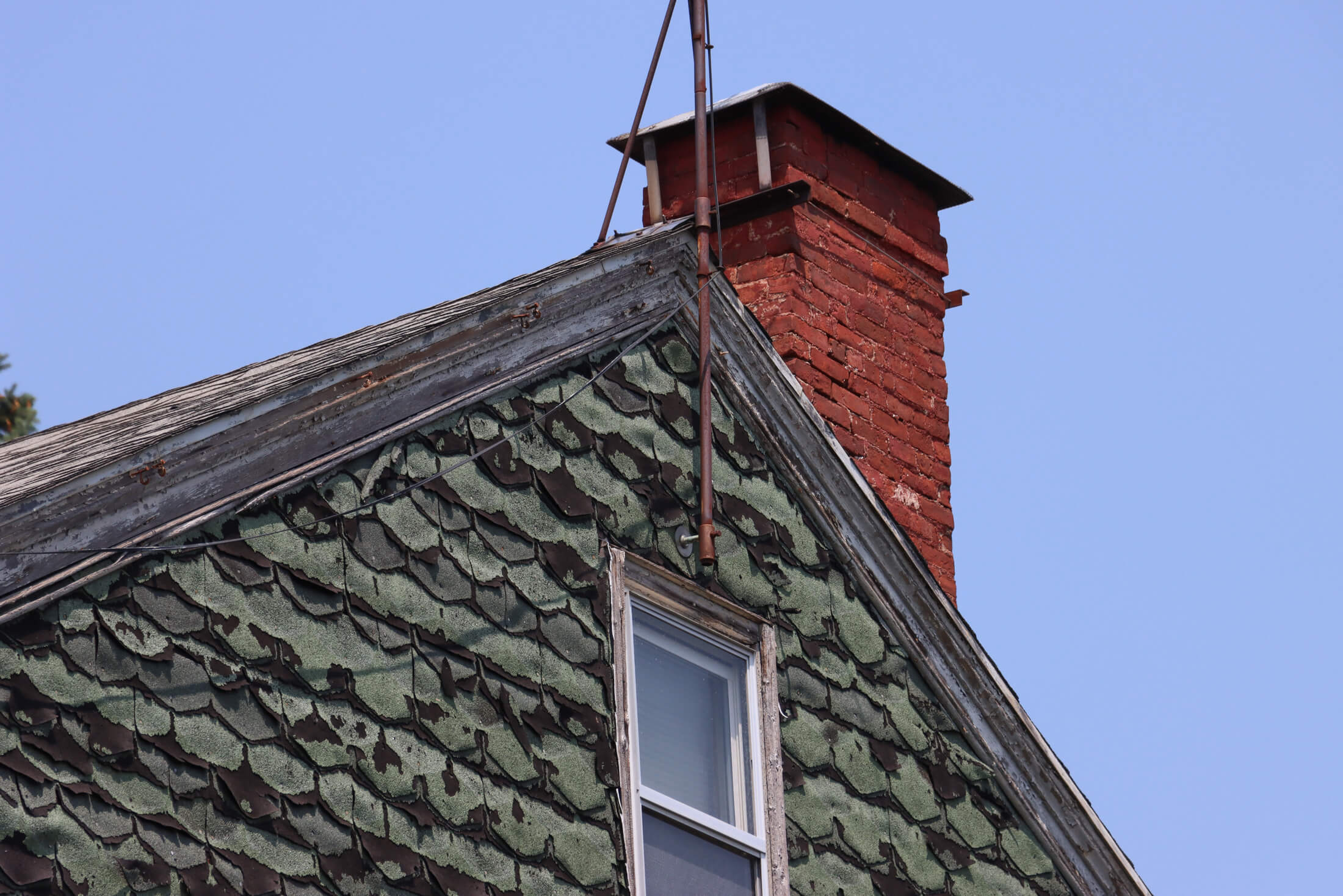
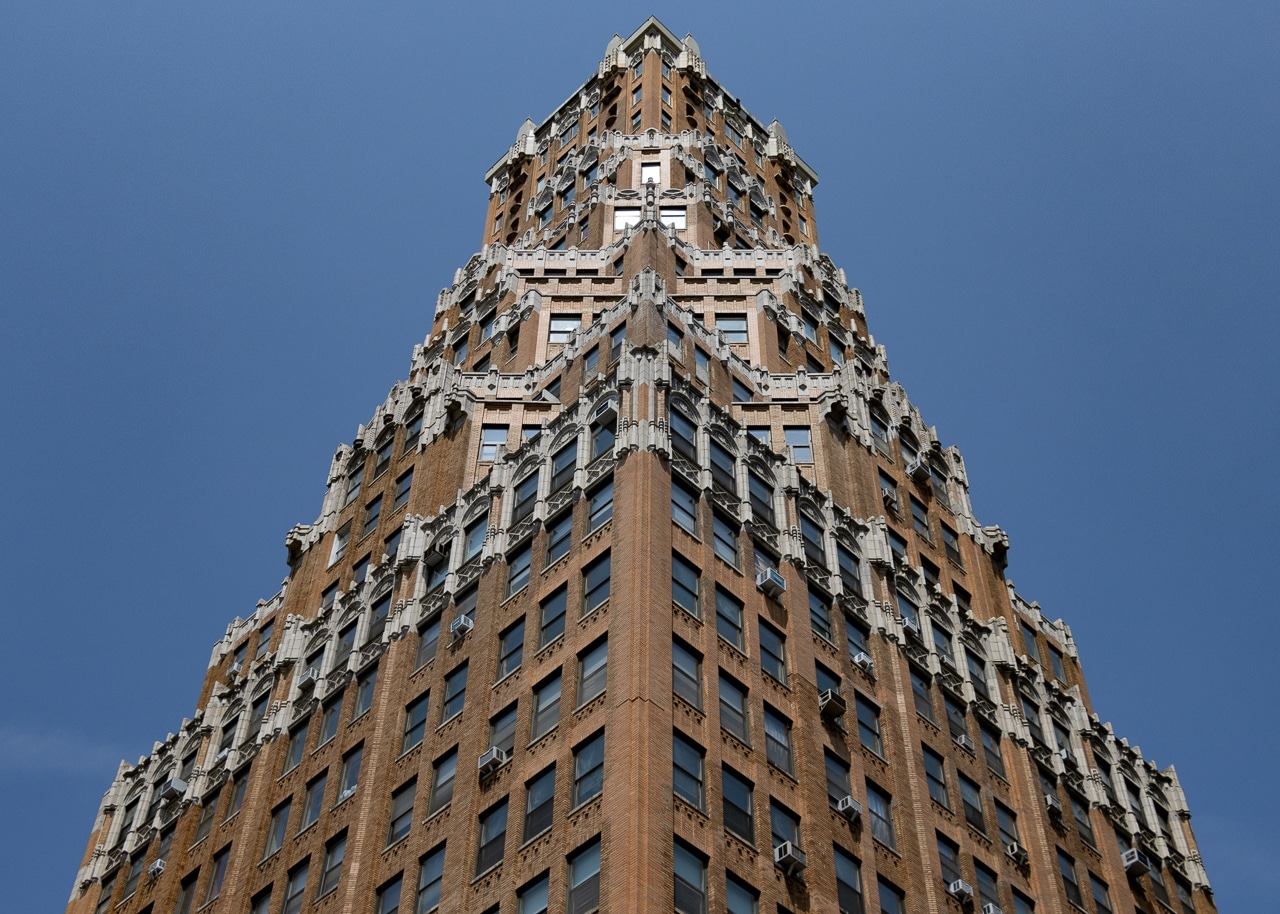
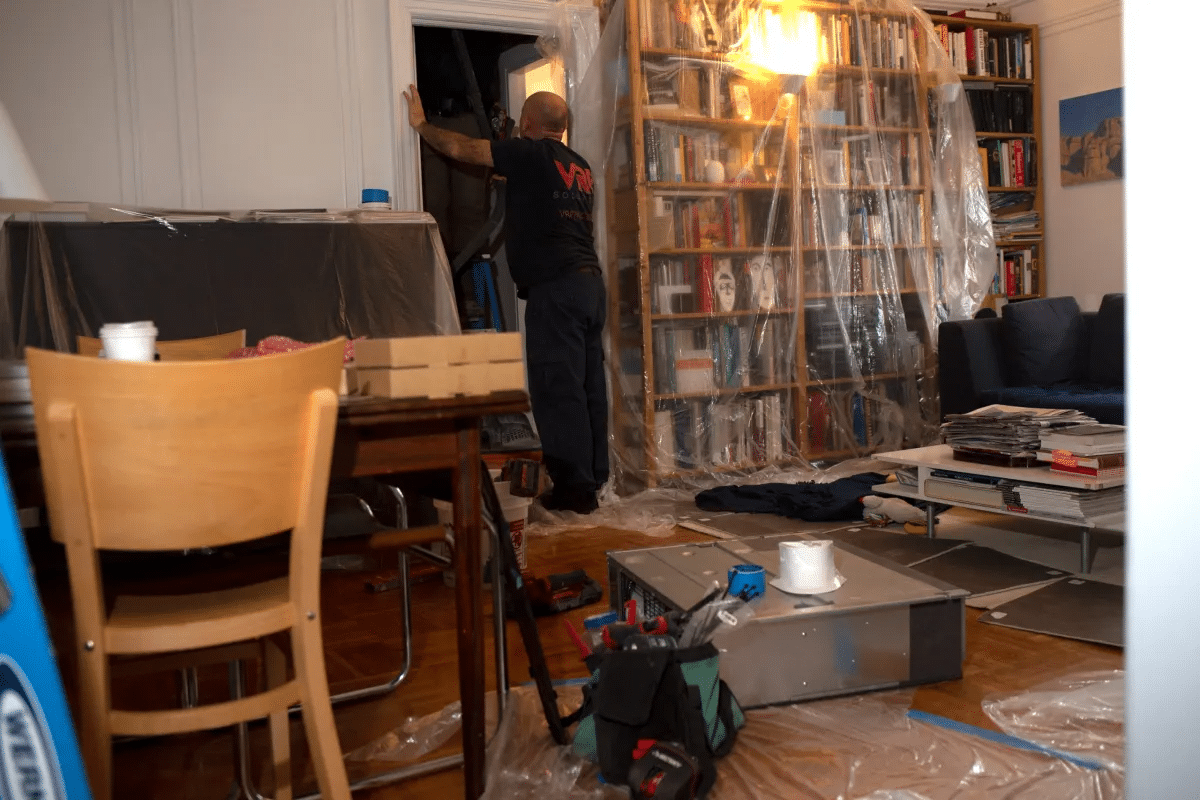






What's Your Take? Leave a Comment